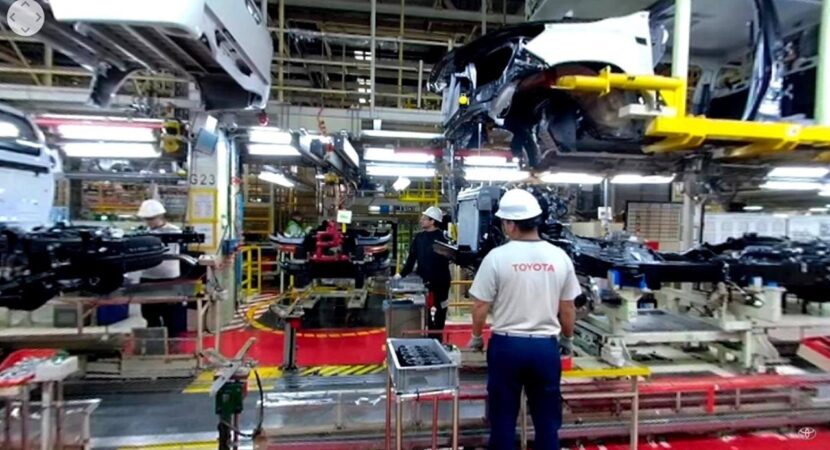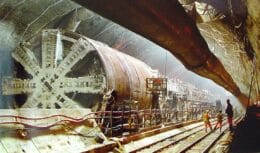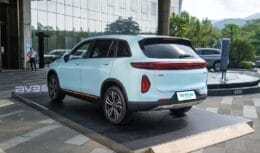
Contrary to Volkswagen, Renault, Honda and Volvo, the multinational Toyota refuses to end production of combustion, gasoline and diesel engines
The multinational automobile manufacturer Toyota is going in the opposite direction to the automakers Volkswagen, Renault, Honda and Volvo, and decides to continue producing combustion, gasoline and diesel engines in its factories for some time. But that doesn't mean the automaker refuses to honor its commitments to the environment. To achieve carbon neutrality, the Japanese company developed a hydrogen-based engine. The idea was to get an “absolutely green” car, without being electric. The energy of a hydrogen engine is achieved thanks to the combustion of this element, which is faster than in gasoline engines.
Read also
- Job vacancies to work in the factories of Baterias Moura, the leader in the manufacture of automotive, nautical, logistics and telecommunications electric accumulators
- Chinese automaker clones Volkswagen's iconic Kombi, right after shamelessly manufacturing an electric copy of the Beetle
- Volkswagen announces the installation of the Baterias Moura factory, in its industrial complex in RJ, for the production of the first electric truck in Brazil!
- After Volkswagen, Ford and Fiat, the multinational Chevrolet suspends production at a factory in SP and Chevrolet Onix, Onix Plus and Spin will not be manufactured until August 3
- Contrary to Volkswagen, Renault, Honda and Volvo, the multinational Toyota refuses to end production of gasoline and diesel combustion engines
The next step in the evolution of this technology will be to verify its effectiveness in the competition. For this, he was mounted on a racing vehicle based on Toyota Corolla Sport, within the ORC ROOKIE Racing team, to participate in the third round of the 2021 Super Taikyu Series, driven by Hankook, the Fuji NAPAC Super TEC 24 Hours, between May 21st and 23rd.
By testing this hydrogen engine under the demanding conditions of a world motorsport competition, Toyota hopes to obtain data that can contribute to the realization of a society based on sustainable mobility in the immediate future.
Electric vehicles, such as the Toyota, use a fuel cell – Fuel Cell Electrified Vehicles (FCEV) – in which a chemical reaction takes place between hydrogen and oxygen present in the air, which generates electricity to power an electric motor.
Instead, the new hydrogen engine dispenses with this component and generates power by burning this chemical, using fuel delivery and injection systems that have been modified from those used with gasoline engines. Except for burning small amounts of engine oil while driving, as is also the case with gasoline, hydrogen engines emit zero CO2 during use.
Toyota Corolla engines powered by compressed hydrogen do not emit CO2 during use
In these blocks, combustion occurs at a higher rate than in gasoline blocks, resulting in a good response. In addition to having excellent environmental performance, hydrogen engines also have the potential to convey pleasure behind the wheel, including the sounds and vibrations so much to the taste of motor enthusiasts.
Toyota has long been working on innovating the technology of different types of powertrains. It also applies to production vehicles and technologies that have continued to improve, through its participation in automotive competitions, a good example of how the launch of the GR Yaris was in 2020.
The hydrogen-powered racing car prepared for the track measurement is expected to refuel during the race using hydrogen produced at the Fukushima Hydrogen Energy Research Center in Namie City. In addition to trying to expand the hydrogen infrastructure, promoting the use of this fuel, Toyota also intends to continue working towards the revitalization and economic recovery of the region.
Aiming to achieve carbon neutrality, the Japanese giant strengthened its environmental initiatives by promoting the use of hydrogen, popularizing the FCEV and several other products powered by fuel cells. By further refining its hydrogen engine technologies through motorsport, Toyota is aiming for a better hydrogen-based society.
Citroën's air-powered hybrid car: in recent times several projects have been developed, although none have reached the market

At the 2013 Geneva Motor Show, Citroën presented an experimental version of the C3 characterized by being a hybrid vehicle that, instead of using an electric motor for this function, had a pneumatic engine powered by compressed air. So he had an idea born in the 50s.
O car it was capable of running up to 70 km/h with only compressed air, with the gasoline engine or with a combination of both. In the urban cycle, it consumed less than 3 liters per 100 kilometers. Eventually, the idea was dropped or at least shelved.











Air Force F-16 fighters…
True friend, what they shot down were…
Air Force F-16 fighters…
Well... It's flying scrap... Typical...
Air Force F-16 fighters…
I would like to know what planet you live on…
They discover the third largest deposit…
That’s why all foreigners and NGOs…
Air Force F-16 fighters…
Which genocide are you talking about? Than…
It is a great innovation, above all we can use…
Best comment ever
There’s nothing new about this intern thing…
Do they offer housing?
Yes, I already had it, I'll buy another one
Come on, an American mega turbine that looks like…
I want to buy one this year, if…
SHAME ON A CAR WITH A HUGE PRICE…